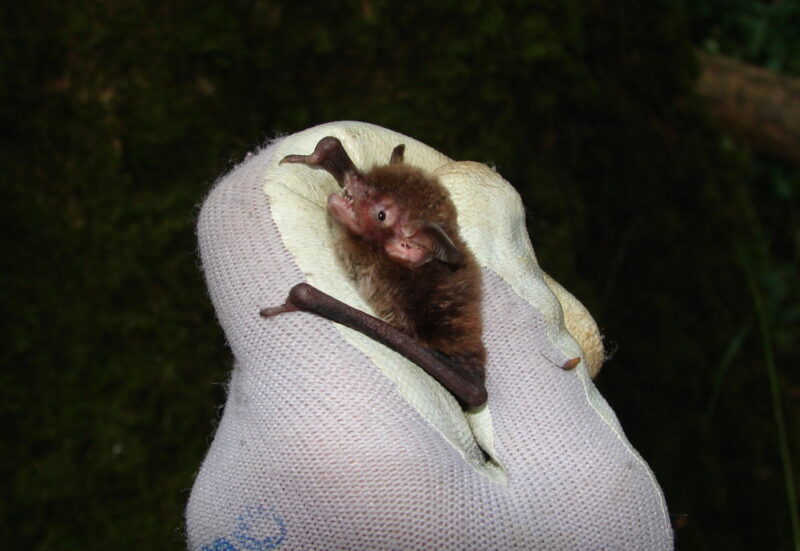Daubenton’s bat

Status
Native and common
Population
1,030,000
Scientific name
Myotis daubentonii
Daubenton’s used to be called water bats because they spend most of their time close to ponds, lakes or rivers. They have shiny, red-brown fur with a pale underside and a pinkish, round face with a pink, hairless patch around their eyes. They hunt by skimming over the water’s surface with a shallow wing beat, and either grabbing insects with their large, hairy feet or scooping them up with their tail membrane. They can fly at up to 24 kmph and are often seen an hour after sunset, circling over water. They often fly in straight lines rather than the erratic flight paths of pipistrelles.
Wingspan: 24 – 27cm
Weight: 6 – 12g
Lifespan: Up to 22 years
Reproduction
Mating occurs during autumn and winter and the females form maternity roosts in late spring. A single pup is born to each female in June or July and is weaned by six weeks.
Diet
Midges, caddis flies, pond skaters and mayflies.
Habitat
Lakes, slow-moving rivers and ponds in open countryside; less common in urban areas.
Summer roosts
Tree holes, tunnels, bridges, caves and sometimes stone buildings.
Winter roosts
Underground sites such as caves and mines; individuals lodge themselves in tight crevices or against the wall. Very few individuals are ever located at the same site.
Ultrasound
Echolocation calls range from 35 – 85kHz, with a peak at 45 – 50kHz. On a bat detector the calls sound like 5 – 10s bursts of machine-gun fire.
Status and conservation
GB Red List: Least Concern (LC).
Population size and distribution
GB population 1,030,000. The population may be increasing but the trend is uncertain. Daubenton’s bat is widely distributed in Great Britain and Ireland, though is scarce in the north west of Scotland.
Did you know?
Daubenton’s bats benefited from the extensive network of canals that was built in Britain during the Industrial Revolution. The canals and the bridges that spanned them provided perfect feeding habitats next to ideal roost sites.
